Often, our gardens' soil and growing conditions are not the sunny paradises depicted on TV gardening shows. Instead, your home is situated on clay soil surrounded by trees or buildings that cast significant shade.
These conditions usually combine to add the additional wrinkle of wet soil that does not dry out regularly or fully. Therefore, to help your gardening quest, we have gathered eleven plants that do well and even thrive in wet clay soil with shade.
These recommendations range from garden classics to less common varieties, from eye-catching flowers to standard ground cover. We provide its name, growing patterns, a photo, some basic growing directions, and other relevant, helpful information for each plant.
Reading this list will set you well on your way to a beautiful garden in your wet clay soil that is sure to impress friends, family, and neighbors alike.

1. Astilbe [Astilbe sp.]
Astilbe is the genus name for a wide range of shade-tolerant flowers popular in gardens the world over. For gardening, about twenty-five species have been crossbred to produce a near-infinite selection of flower colors and form variations.
In general, these plants form tall triangular points of many tiny fluffy-looking flowers on small branches, all originating from a central stalk. Below the flowers, that same stalk is covered in bright green thin foliage.
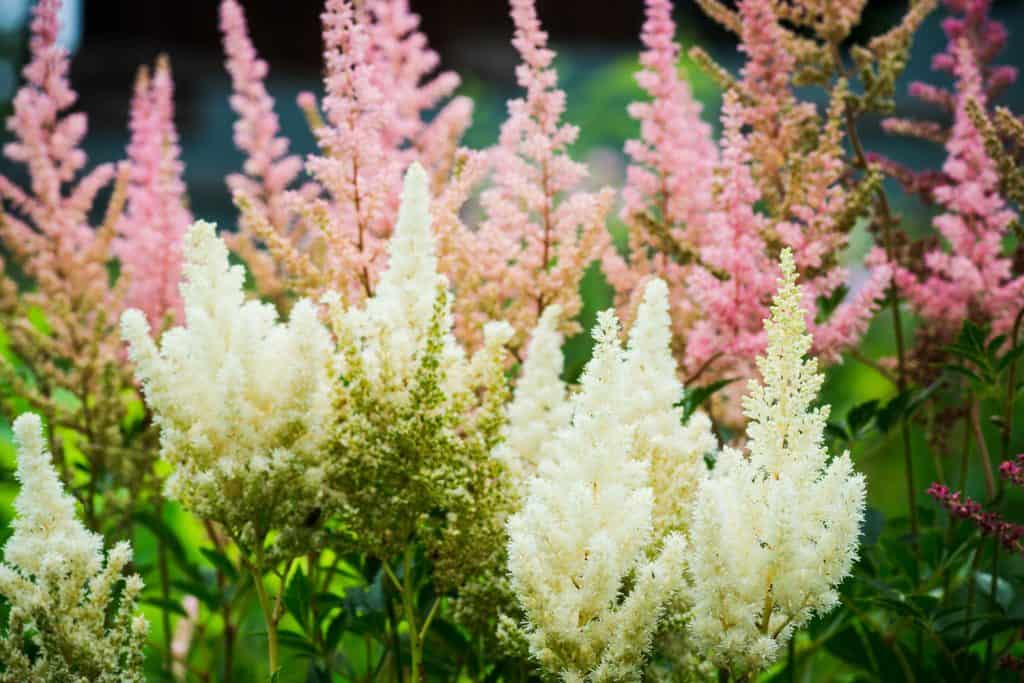
While these flowers do well in the shade, they will flower best if they get occasional and especially morning sunlight. Fortunately, your wet soil will do the astilbe well as they prefer a constant source of moisture.
Astilbe will do better if you mix in compost or other material to improve drainage. However, they are also tolerant to many soil types, including clay. In the winters, you can choose to cut back dead blossoms.
2. Blue Cardinal Flower [Lobelia siphilitica]
Blue cardinal flowers, commonly called great blue lobelia, have a similar stalk-like growth pattern to astilbe. However, the blue cardinal flower sports proud larger blue blossoms that are a favorite of pollinators such as bees and hummingbirds.
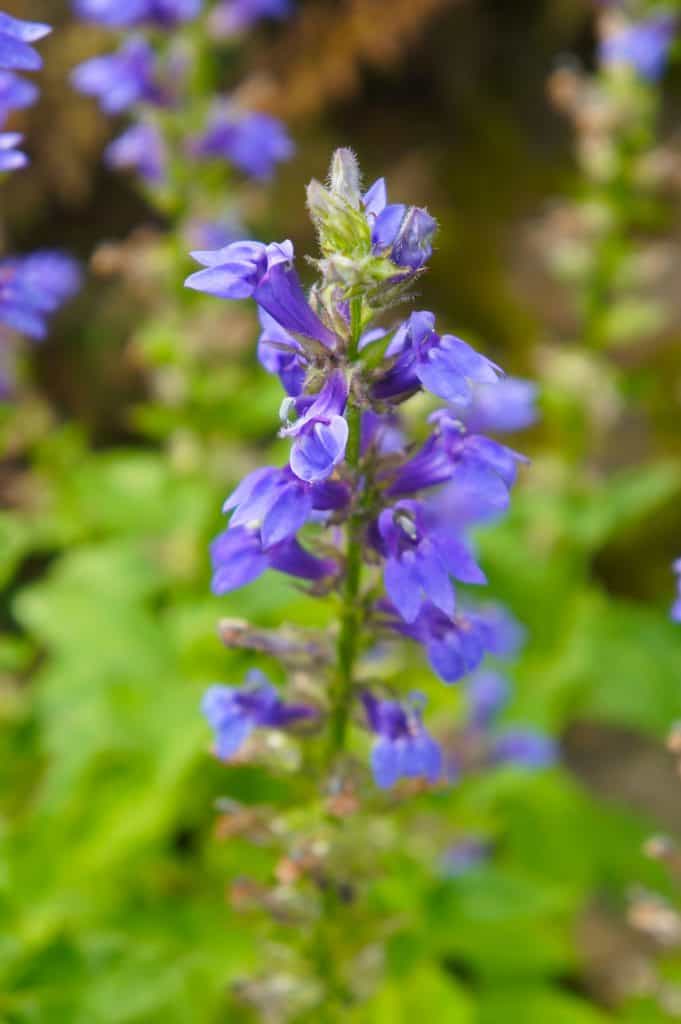
The blue cardinal will bloom the most prodigiously when the plant gets some sun like most flowers. However, these flowers are still considered shade tolerant.
Once planted, they form clumps which make them appropriate for edges and other similar uses.
This hardy perennial is native to North America, making it perfectly suited to return with strength year after year. The blue cardinal flower grows well in zones 4 through 8. Like most plants on this list, blue cardinal thrives in moist soil and is clay tolerant.
3. Liverwort [Hepetica sp.]
This low-lying group of shade-tolerant species grows throughout most of the northern hemisphere. Liverwort, a herbaceous plant, gets its common name from the three lobes of its leaves, which are said to resemble a human liver.
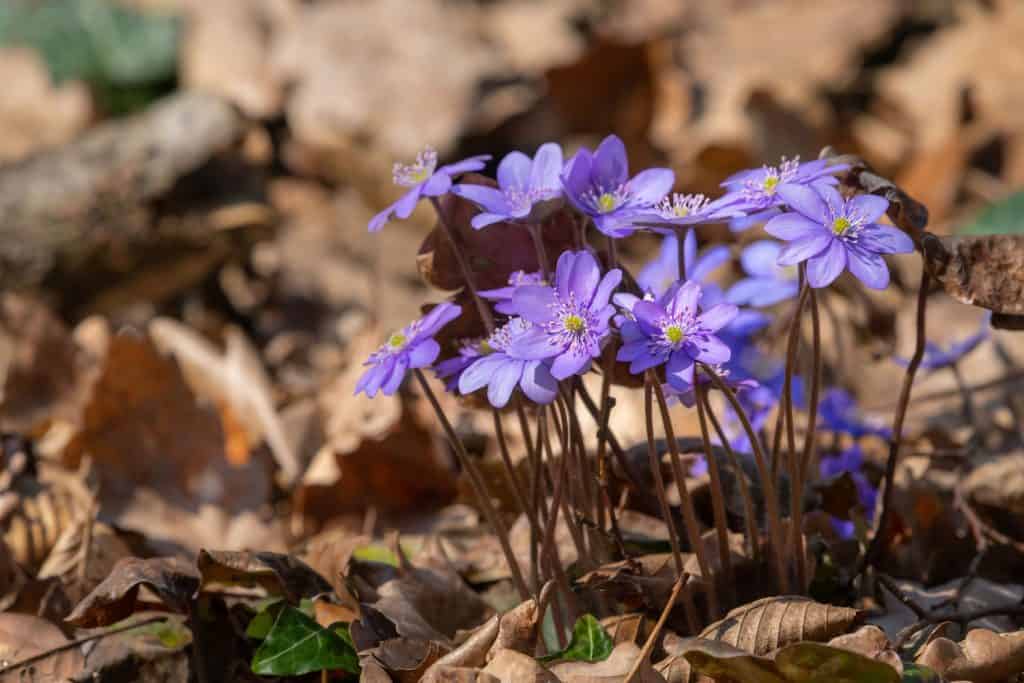
The flowers resemble buttercup but are generally light pink, blue, or white. Overall, the plant gets no taller than 12-inches high.
Gardeners tote the ability of this plant to tolerate heavy clay soils and wet conditions. Liverwort is often planted around trees and in other very shady garden locations.
In addition to liverwort, this plant also goes by liverleaf, squirrel cup, and other familiar names.
4. Hosta [Hosta sp.]
Of all the plants recommended for shady, wet, and clay soil locations, Hosta is the most commonly cited option.
Hosta is known not for their flowers but instead for their striking carpet of leaves which often sport white borders around various greens.
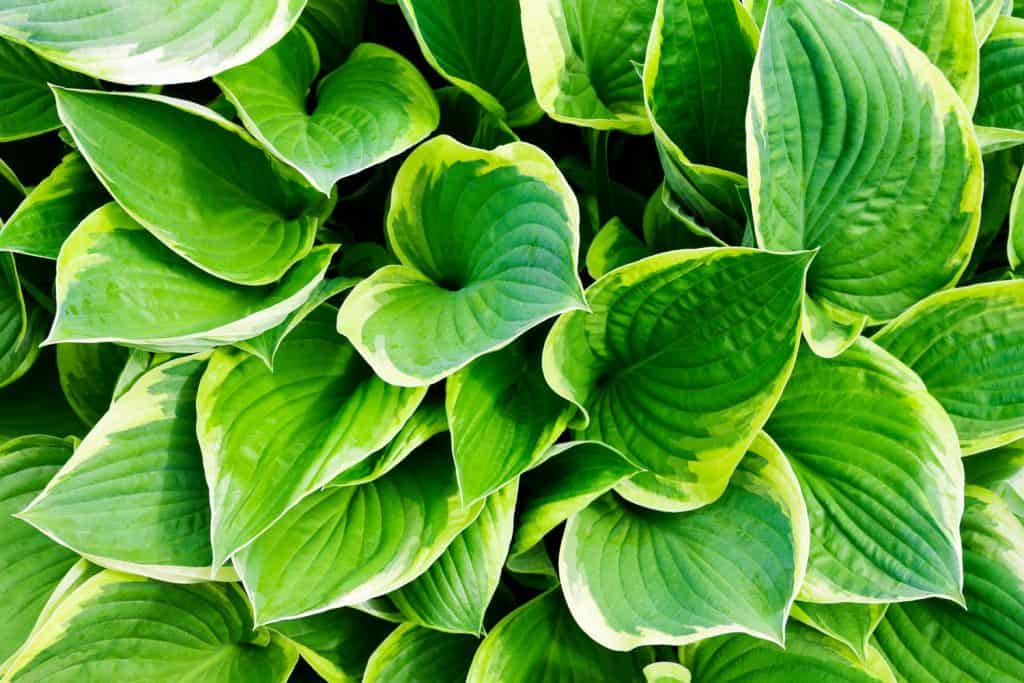
For your shady garden, opt for darker leaves as they are considered more shade tolerant. Usually, hosta is purchased as matured plants which you can plant directly in your garden.
Dig a 12-inch deep hole that gives your plant at least 1-foot of space on all sides to reach maturity.
Fill this hole with compost or topsoil to help your hosta establish itself in your clay soil. Once fully rooted, you can expect this perennial to thrive for years. In addition to the striking leaves, hostas shoot out stalks that produce yearly lily-like flowers.
5. Indian Pink [Spigelia marilandica]
Indian pink, an excellent hummingbird attractant, truly puts on a floral show. This low-lying wildflower puts out long thin red blossoms that have pointed yellow stars at their crown. When mature, you can expect your Indian pink to be one and a half to two and a half feet tall.
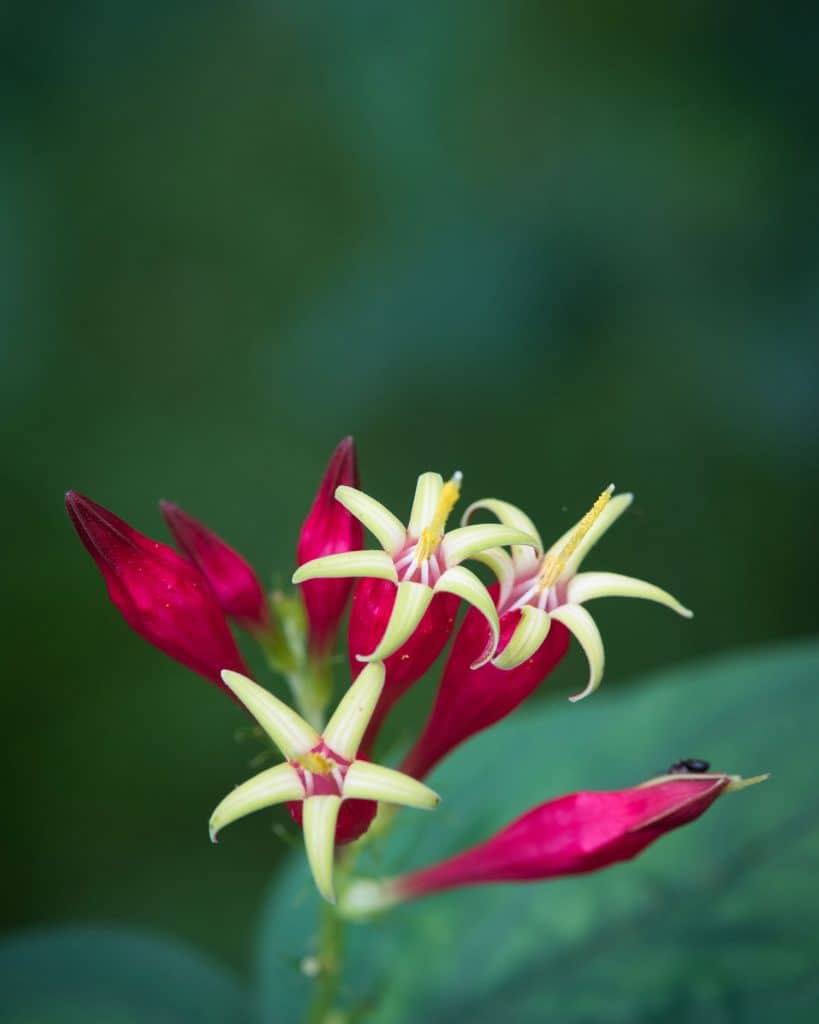
Once again, Indian pink is a perennial. Many gardeners recommend planting these herbaceous plants in the fall to allow plenty of time for root growth before dry and hot summer months. However, planting time is not critically important, given your shady wet location.
Take note, Indian pink prefers more acidic soils, so it may need to be fertilized with some acidic fertilizer such as espoma soil acidifier. This is especially important because heavy clay soils are often more naturally basic.
6. Weigela [Weigela sp.]
Weigela is the first plant on this list: a woody shrub instead of a herbaceous perennial. The largest care point for weigela is the need for periodic pruning depending on the space allotted and gardening vibe.
Generally, this shrub can get up to 10-feet tall and 10-feet wide if given the room to grow.

The flowers are smaller and bell-shaped and form clusters that pair well with the off-green pointed leaves. Depending on the cultivar, the weigela flowers can be pink, red, white, and even yellow.
While shade tolerant, you can expect the flowers and growth of this plant to thrive best with at least partial sun. Take note, in hotter climates, the weigela leaves may even burn if exposed to intense afternoon sun.
7. Goat's Beard [Aruncus dioicus]
The white and whispy flowering stalks of goat's beard look very similar to the actual beard of a goat - hence the name. This plant grows quite large at 3 to six feet tall and six feet across.
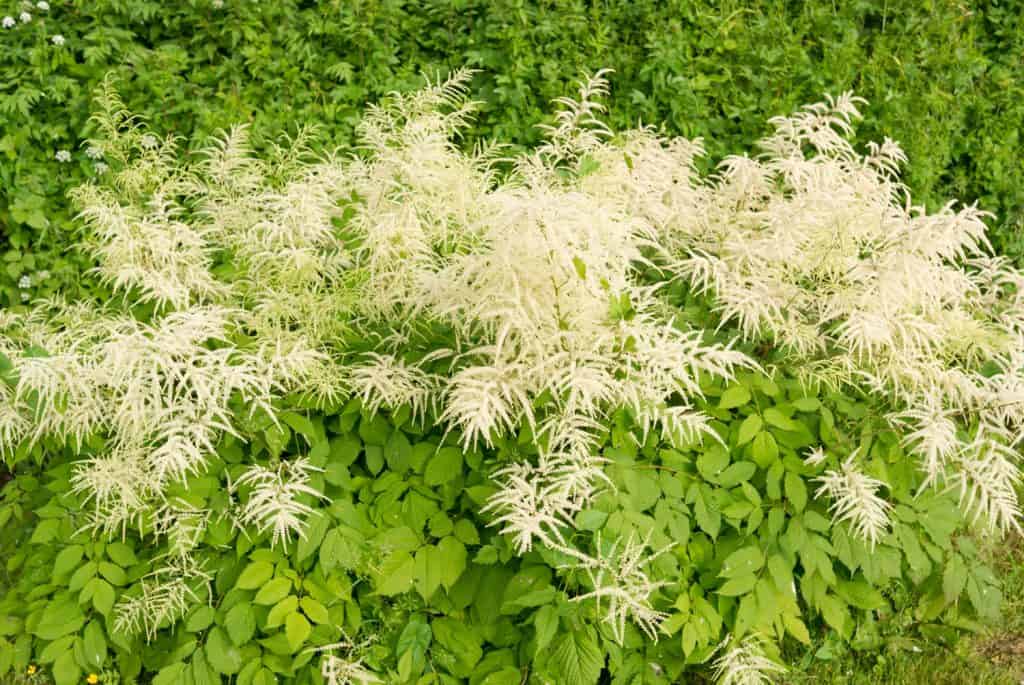
Rather than specifically shade tolerant, goat's beard is sensitive to temperature. This means that it will do best in the shade in more southern climes and better with increasingly more sun as you head north.
Overall, goat's beard is hardy from USDA agricultural zone 3 through 7.
8. Coral Bells [Heuchera sp.]
Coral bells, which are often referred to by their genus name of Heuchera, are considered so hardy you can plant them and forget them. This is reflected in their wide appropriateness for USDA zones 4 through 9.

The foliage is the true star for these plants, but you can also expect small stalk-like flowers to bloom. The leaves vary in color from red to pink, green or purple, and variegation of multiple colors.
Generally, give each plant approximately one to two feet. For the most attractive coral bell plants, trim back any dead foliage you notice each spring.
9. Lady Fern [Athyrium sp.]
The Athyrium genus, commonly known as lady ferns, compromise a whopping 180 individual species.
These species are classic-looking delicate ferns that fit perfectly in a wooded, shady garden. Unlike many species on this list, lady ferns keep their green year-round.
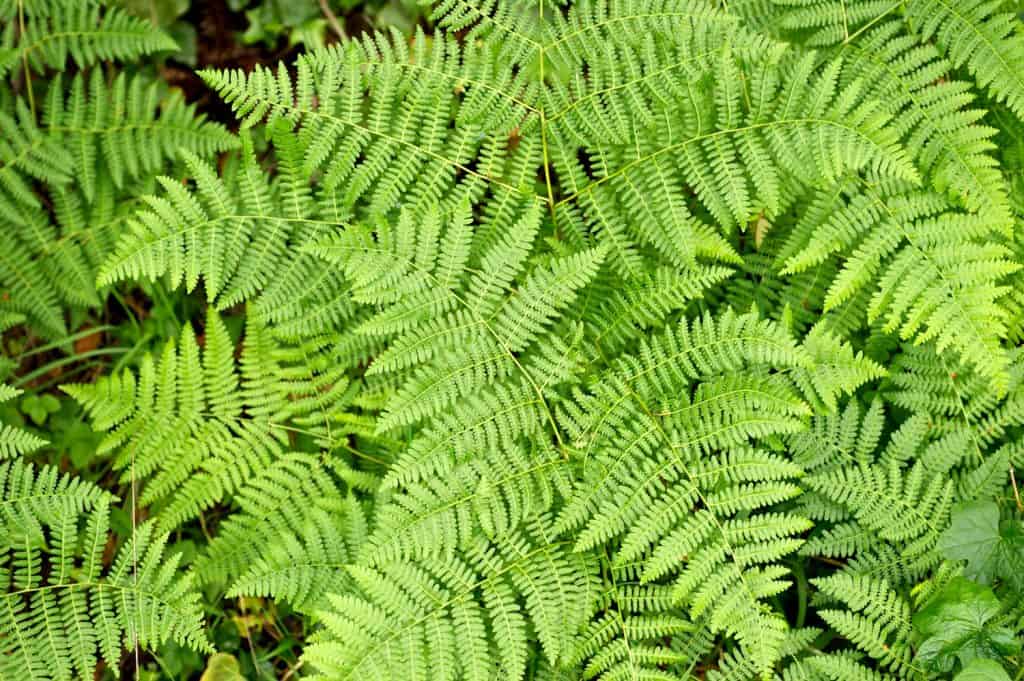
Generally, lady ferns are very easy to care for and tolerant of clay-heavy soil. However, it is never a bad call to add additional nitrogen-heavy fertilizer as directed on the fertilizer packaging to keep these ferns happy.
As with most widely ranges plant genera, lady fern species range from light to dark green, with some varieties even sporting dashes of purple.
10. Bergenia [Bergenia cordifolia]
Bergenia are medium-sized herbaceous plants that thrive in areas of low sunlight. This preference makes their bright pink, white, or purple sprays of flowers all the more striking.
Generally, these plants require about 20-inches of space and will throw up flower spikes to a height of about 15-inches.
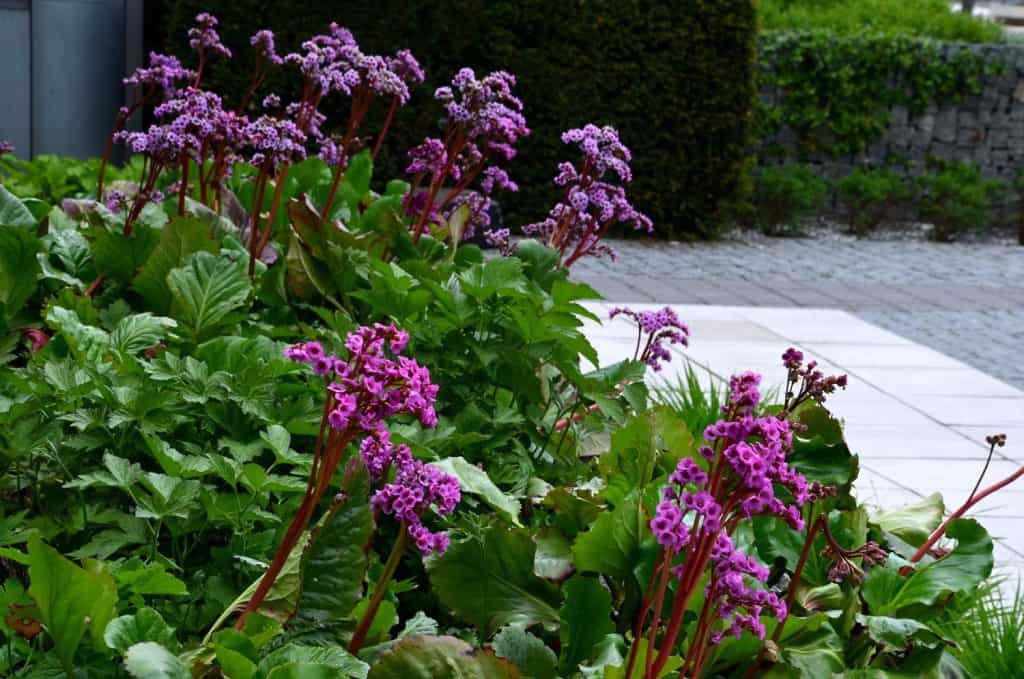
Like most plants on this list, bergenia is a relatively low-maintenance plant, especially if you keep the soil moist. However, for the best curbside appeal, be sure to deadhead all blooms once per year after the seasonal die-off.
11. Sage [Salvia officinalis]
This member of our list has the distinguishing characteristic of being a helpful kitchen herb. Sage not only helps with much Italian cooking, but it also produces attractive purple flowers atop soft and inviting leafy stalks.
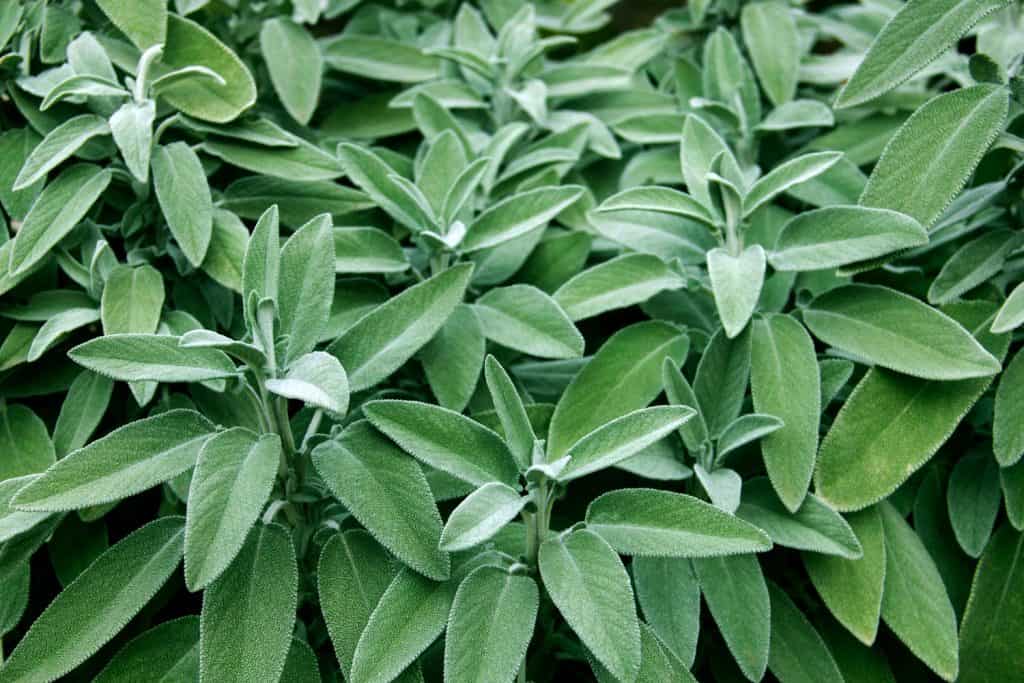
Take note that while the flowers are popular with bees and other pollinators, they will be less robust in areas of deep shade. Further, while sage can thrive in clay soils, you will have the best luck if you amend right around the plant with some topsoil or other well-drained additive.
Additional Reading
To learn more about gardening in the shade, read these great articles from Garden Tabs:
- 15 Best Fast Growing Flowering Shrubs For Shade
- 11 Gorgeous Trees That Like Wet Soil And Shade
- 15 Vines That Grow in Shade

Most helpful article